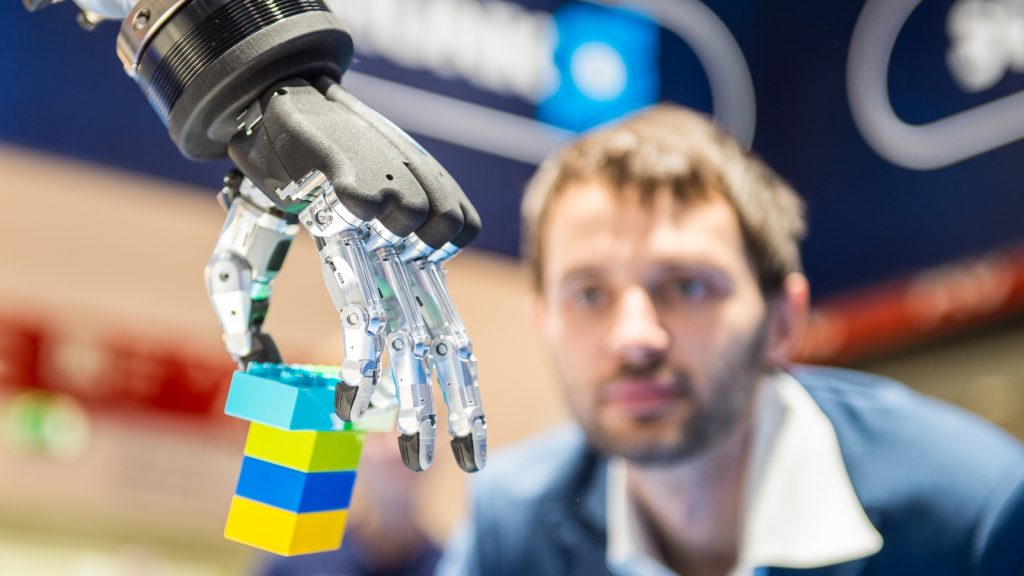
Artificial intelligence (AI) and machine learning, which is a subset of AI, are opening new opportunities in essentially all businesses, in addition to making frequently used equipment more capable.
As anyone might expect, AI and machine learning are frequently applied to robots to improve them. Robots used in the industrial sector can assist organizations in completing more things with fewer blunders. Obviously, safety is key while adding robots in the work environment which is the reason some AI robotics organizations are creating solutions where robots can comprehend what’s in their current environment and respond likewise.
Veo Robotics has an industrial robotics system that consolidates computer vision, AI and sensors. This arrangement permits the machines to work at max throttle except if people get excessively close.
Thus, robots are not, at this point, limited behind enclosures, yet human safety is still a priority. Veo Robotics’ innovation empowers a robot to powerfully evaluate how far it must stay from an individual to try not to hit it.
There are likewise autonomous mobile robots (AMR) outfitted with AI innovation to enable the machines to gain proficiency with the layout of a warehouse and steer safely around warehouse obstacles in real-time. Those vehicles transport parts and completed products, sparing people from a task that may somehow make them take to take thousands of steps per day.
Deep Learning has been in the machine learning field for over 30 years. In any case, it was perceived and brought into consistent use lately when Deep Neural Network algorithms and hardware headways began having high potential. Deep learning can be cultivated through computational capacity and the required datasets that are eventually the ground-breaking resources of machine learning.
The way toward training robots, machine learning requires engineers and scientists to choose how AI learns. Domain specialists play the next part of advising on how robots need to work and work within the scope of the task. They additionally determine the highlights of robots being of help to logistics experts and security advisors. Deep learning centers around the area that a robot should be specific from its root.
Researchers at the University of California, Berkeley, have made new AI programming that gives robots the speed and ability to grasp and easily move objects, making it attainable for them to soon assist humans in warehouse environments.
Artificial intelligence robots through machine learning gain two significant processes – planning and learning. Planning resembles an actual method of instructing robots that assumes the robots to work at what pace it needs to move each joint to finish an errand. For instance, grabbing an item by a robot is a planning input.
Warehouses are as yet worked essentially by people since it’s still difficult for robots to reliably grasp many different objects,” said Ken Goldberg, William S. Floyd Jr. Recognized Chair in Engineering at UC Berkeley and senior author of the study. “In an automobile assembly line, a similar movement is rehashed again and again, with the goal that it can be robotized. Yet, in a warehouse, each request is unique.
Goldberg and UC Berkeley postdoctoral scientist Jeffrey Ichnowski made a Grasp-Optimized Motion Planner that could figure both how a robot should pick up an object and how it should transfer the object starting with one location then onto the next.
Nonetheless, the movements produced by this organizer were jerky. While the boundaries of the product could be changed to create smoother movements, these estimations took an average of about half a minute to compute.
In the new study, Goldberg and Ichnowski, as a team with UC Berkeley graduate student Yahav Avigal and undergrad student Vishal Satish, drastically accelerated the computing time of the motion planner by integrating a deep learning neural network.
By consolidating the neural network with the motion planner, the group cut normal calculation time from 29 seconds to 80 milliseconds, or less than one-tenth of a second. Goldberg predicts that, with this and different advances in robotic technology, robots could be aiding warehouse environments in the coming years.
“Looking for food supplies, drugs, garments and numerous different things has changed because of COVID-19, and individuals are likely going to keep shopping this way even after the pandemic is finished,” Goldberg said. “This is an exciting new opportunity for robots to support human workers.
Progress in AI and machine learning is taking place rapidly. Individuals who have probiotics, engineering, or related fields should remain side by side of improvements like these and endeavor to see how such progressions could influence their work soon or over the long-term.
Share This Article
Do the sharing thingy
Source: https://www.analyticsinsight.net/deep-learning-will-make-robots-grasp-and-move-objects-easily/